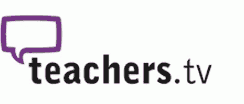Light Visible 7-11
This collection explores visible light, in particular colour, suitable for ages 7-11.
About visible light: The visible spectrum is the portion of the electromagnetic spectrum that is visible to the human eye. Electromagnetic radiation in this range of wavelengths is called visible light or simply light. A typical human eye will respond to wavelengths from about 390 to 700 nm. In terms of frequency, this corresponds to a band in the vicinity of 430–770 THz.
Resources in this collection:
- How Light Travels: This Teachers TV Lesson Starters video can be used to illustrate how light comes from a source. Using a range of studio lighting effects, children can be encouraged to discuss coloured lights, the production and manipulation of light.
- Light: This resource from Physicists in Primary Schools (PIPS) supports the teaching of light at Key Stage Two.
A presentation introduces sources of light and how we see them, demonstrating how we see objects, reflection of light, composition of white light and primary colours. The presentation is interspersed with class experiments, games and activities linking children’s knowledge with their experience through demonstration and discussion of up-to-date applications. - Light: Produced by the Hamilton Trust, this resource aimed at Year Three give details of seven lessons on light. It includes activities which develop an understanding of how the Earth’s movement gives rise to seasons and day and night. Children investigate shadows, reflections and sundials.
Other lessons include work on transparent, opaque and translucent materials and discussions on safety in the Sun and solar energy. This resource includes lesson plans, practical activities and all student materials. - Light Teachers' Guide (Ages 7-12): Nuffield Primary Science Teachers’ Guide for teaching the Light topic, to students aged 7-12 including planning, exploring light, assessment and background science
- Modelling Light: From Teachers TV Lesson Planning Pack series, this video shows an example of how a lesson can introduce children to the idea of light travelling in a straight line.
Rachel Dixon, a Year Six teacher at Ripple Primary School in Barking, presents her lesson on light.



